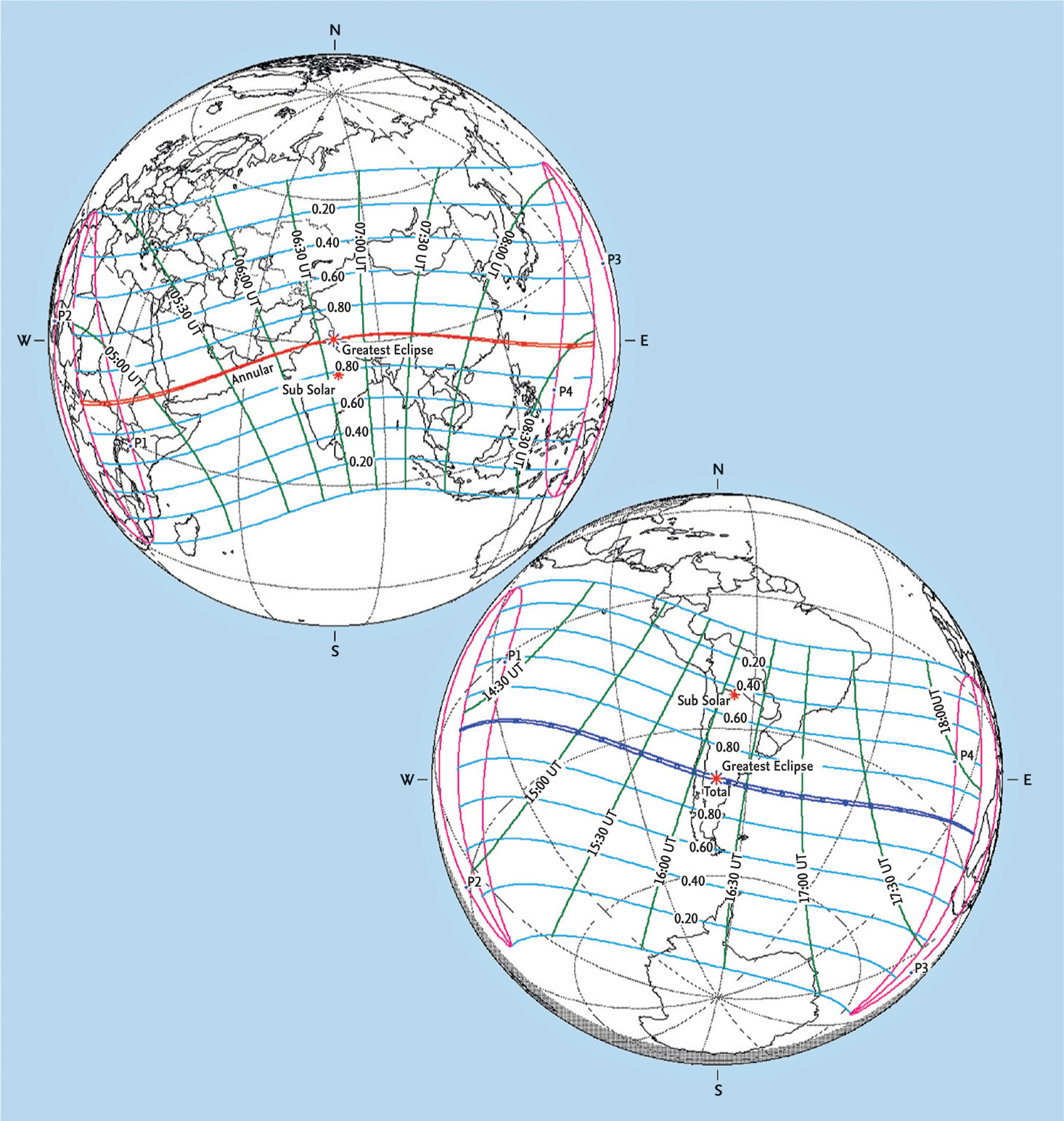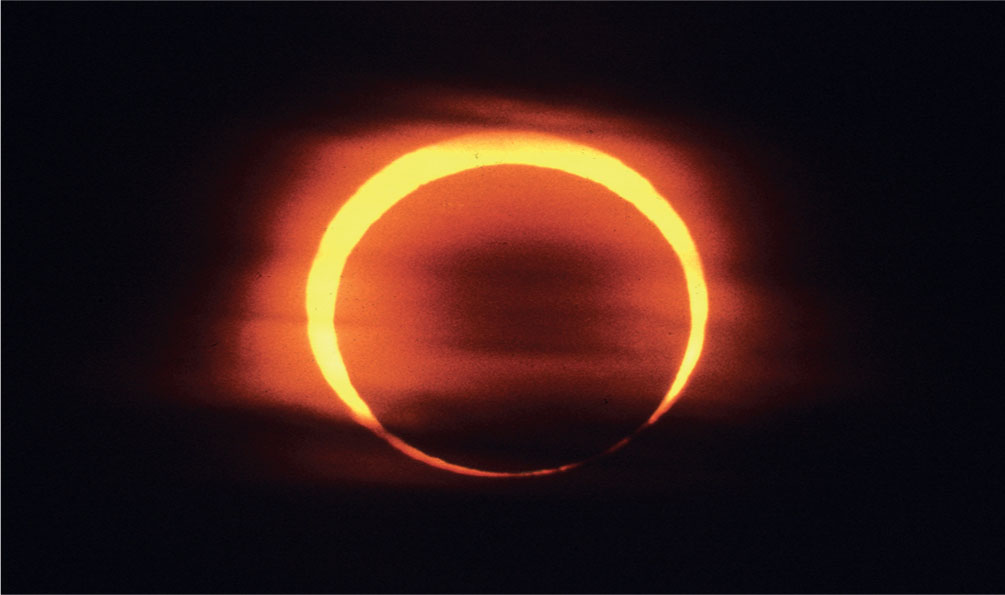Lunar eclipses
There are four lunar eclipses in 2020, but none are total. Technically, all are penumbral eclipses – and so no change in brightness is detectable with the naked eye – but in one case, the eclipse of January 10, at mid-eclipse (at 19:10 UT) it is just possible (but unlikely) that part of the Moon may darken sufficiently for the change to be detectable. But this will depend on conditions in the Earth’s atmosphere and how much light it blocks.
Solar eclipses
There are just two solar eclipses in 2020. The first is an annular eclipse on June 21, with a path that stretches from East Africa across Arabia, India and China. Maximum eclipse occurs on the India/China border, but even here the duration is just 38 seconds.
The second eclipse, on December 14, is total but largely over the oceans. It starts in mid-Pacific, crosses land over Chile and Argentina (where mid-eclipse occurs, with a duration of 2 minutes 10 seconds), and ends over the Atlantic, west of Namibia.

Eclipses. When the Moon passes through the Earth’s shadow (top), a lunar eclipse occurs. When it passes in front of the Sun (below) a solar eclipse occurs.

The annular eclipse of 21 June 2020. Greatest eclipse, with a duration of just 38 seconds, occurs at 06:40 UT on the India/China border. The track begins in East Africa and ends, after crossing China, in the Pacific.
The total eclipse of 14 December 2020 begins in mid-Pacific. Greatest eclipse occurs at 16:13 UT in the middle of Argentina, with a duration of 2 minutes 10 seconds. The track ends in the Atlantic, west of Namibia.

An annular eclipse of the Sun, photographed from California, towards the end of the eclipse at sunset over the Pacific.